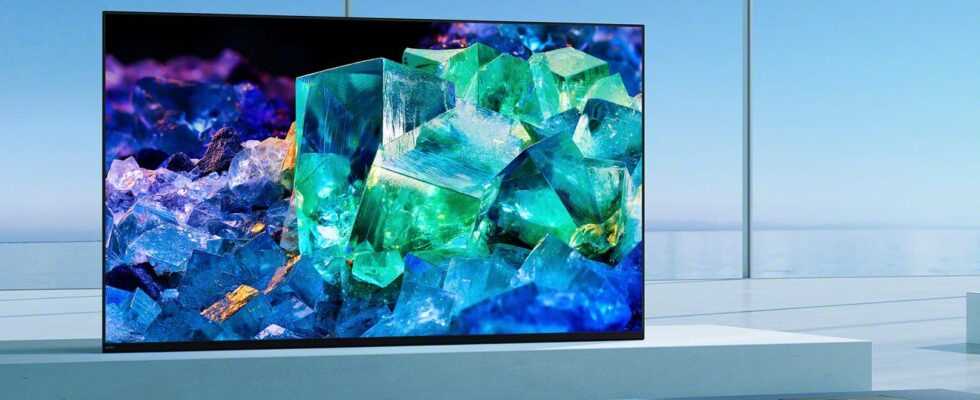QD-Oled, Mini-LED, W-OLED, Neo QLED … as CES in Las Vegas closes its doors, it’s time to take stock of the main announcements for televisions

The Sony Bravia A95K television // Source: Sony
Like every year, this early January was an opportunity for Las Vegas to host CES, the largest consumer technology show. Due to numerous withdrawals caused by the pandemic, not all announcements took place on site. However, this did not prevent manufacturers from announcing their novelties.
Certainly, we have had many announcements on the side of computers, smartphones and electric cars, but CES is above all the TV show and this 2022 edition was no exception. We had new models from Samsung, LG, Panasonic, TCL or Sony. After having detailed these different novelties one by one, it is time to take stock by identifying some major trends.
Samsung QD-Display panels… without Samsung
The first of these trends, it comes from Samsung and it is very clearly the QD-Display technology. Be careful, on the other hand, if this technology comes from Samsung, that does not mean that it is found on Samsung televisions. No, it is an Oled panel technology developed by Samsung Displays, but that we will not have on the models of the Korean manufacturer … at least not now.
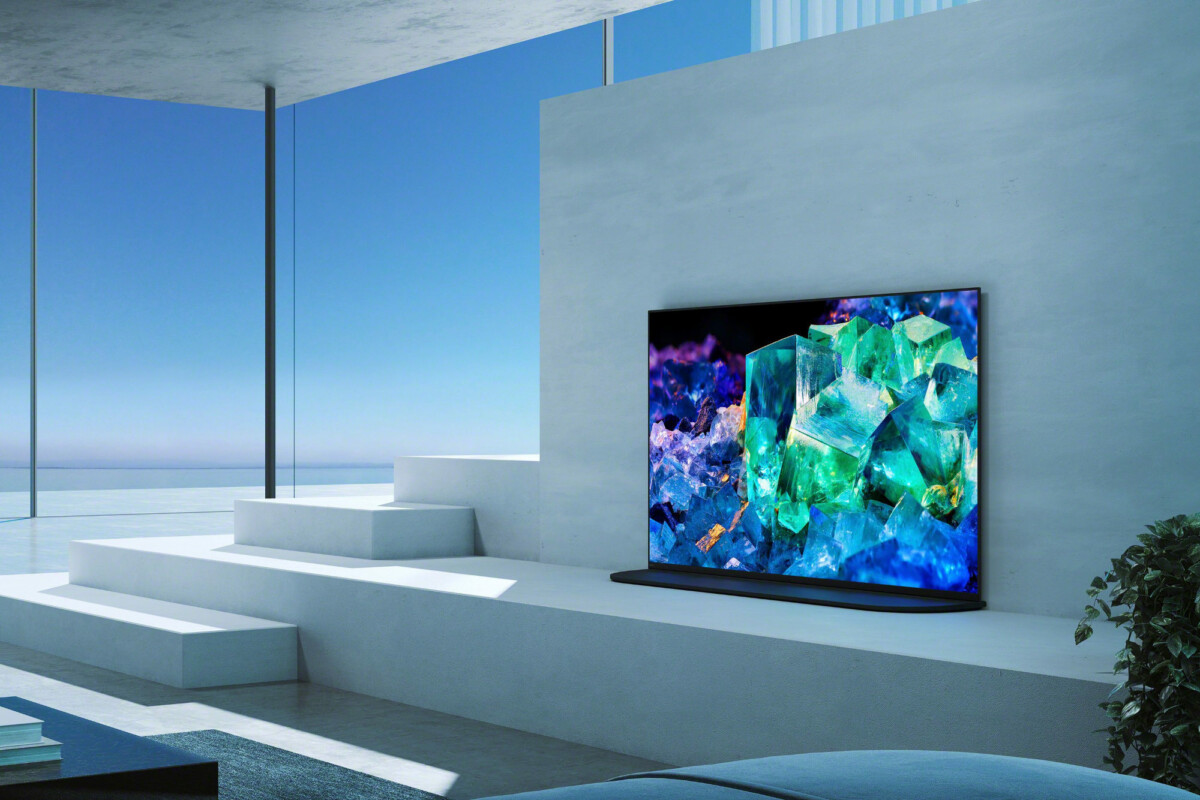
Sony A95K // Source: Sony
In fact they are Sony, with the Sony Bravia XR A95K, and Alienware, with its Alienware AW3423DW PC monitor, both of which integrate Samsung QD-Display panels, that is to say Oled in Samsung sauce .
In fact, the Korean manufacturer abandoned large format Oled tiles a few years ago, making its competitor LG one of the main suppliers in the industry. At the time, Samsung explained that the risks of marking were too high, but, above all, that the brightness was too low on these screens compared to the LCD. Two problems solved with this new panel technology.
On the QD-Oled, we still have the main interest of the Oled, with self-emitting panels, without a backlighting layer, but the diodes used are all blue diodes, which are brighter. Samsung will add a layer of quantum dot on top of these pixels to modify their color and thus make it possible to have red or green pixels. We have prepared a very complete file for you to understand everything about Samsung’s QD-Oled.
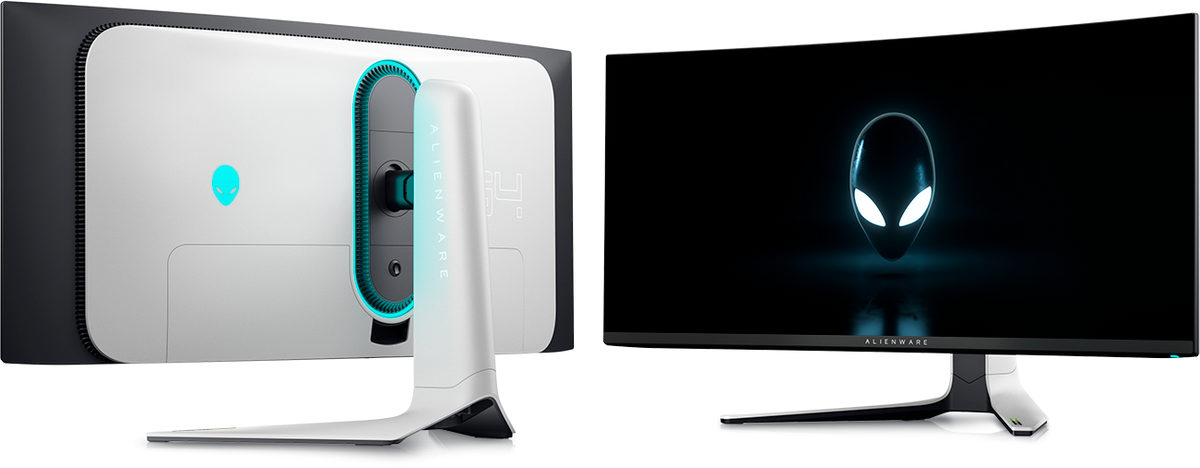
Alienware AW3423DW // Source: Dell
So far, only Sony has equipped one of its televisions with a QD Display panel, while Alienware has integrated it into a PC monitor. It is however a safe bet that other manufacturers will follow as the initial feedback is positive. The big question remains whether Samsung will follow suit by adopting its own technology.
The push of the Neo QLED
Because on the Samsung side, the time has not yet come to Oled on its televisions. It is even a little as if the Korean manufacturer was doing everything to avoid these tiles on its own products. Judge for yourself: we were treated to Micro LED televisions, LCD televisions with UHD Dimming supreme micro backlighting and, above all, Neo QLED televisions.
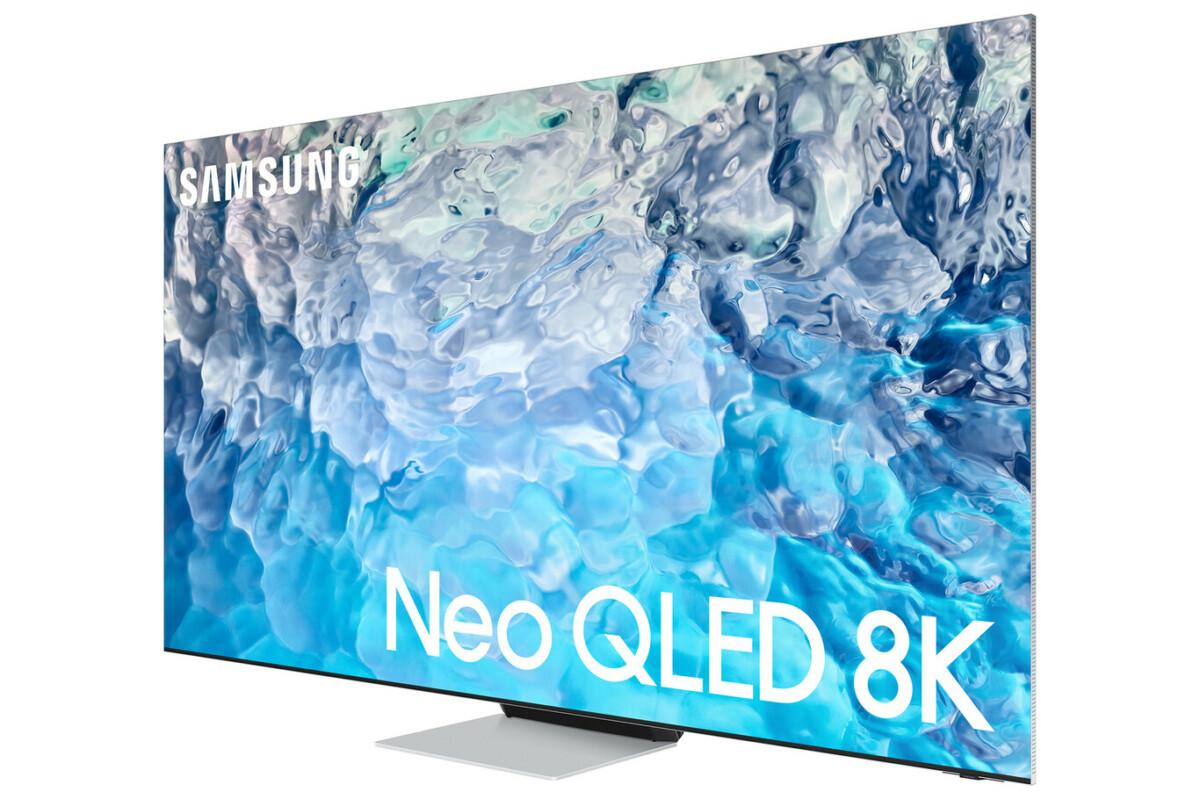
And in the field of Neo QLED, here too Samsung has gone above and beyond. It is not less than seven models of televisions, not to mention the different variations of diagonal, which will benefit from this display technology already inaugurated at CES last year.
Concretely, the QLED, we know, they are LCD panels with a classic backlighting which have the particularity of using quantum dots to offer better color rendering, higher contrasts and better coverage of the color space.
The Neo QLED used by Samsung goes even further by managing the backlighting even better thanks to the MiniLED. These MiniLEDs are 40 times smaller than the LEDs used on a conventional LCD television and will therefore allow better management of brightness and contrast, in particular by reducing the effects of blooming. Compared to Oled, this technology has the advantage of allowing, like all LCD screens, a brighter image, more comfortable, especially when watching your television in broad daylight.
Another advantage of this Neo QLED is the increase in information, since the panels will now be able to offer 14-bit HDR rendering. Granted, the best HDR codec currently on the market, Dolby Vision, is limited to 12 bits and not even supported by Samsung, but this will allow TVs to be fully compatible with any new features to come to the market. the front of HDR.
OLED still present at LG
Samsung has been talked about a lot above, whether it’s the QD-Oled or the Neo QLED, but fellow LG also made a lot of announcements at CES in Las Vegas. And inevitably, this time, as we are talking about LG, we are talking about OLED televisions. Because LG has also been trying for some time to respond to the main criticism addressed to the OLED: the lack of brightness.

The Oled LG 97G2 television // Source: LG
And if, at Samsung, this results in blue pixels, LG now favors the addition of a fourth white sub-pixel, brighter, in addition to green, red and blue (WRGB). It is this W-OLED technology – for White OLED – which is embedded in all of the new LGs. But where LG has pushed the cursor further this year is on the LG G2 model. This time we have an OLED EX panel which has the particularity of going up to a brightness of 1000 cd / m², never seen on an OLED TV.
Obviously, who says higher brightness says risk of heating and therefore marking of the screen. To remedy this, LG has chosen to integrate a cooling system to avoid residual images on the screen.
Sony, TCL and the Mini-LED
And since life isn’t just Oled, Sony has also decided to diversify. As we saw earlier, the Japanese manufacturer announced a high-end QD-OLED TV, equipped with a Samsung panel. A change in continuity for the Japanese manufacturer who was already using Oled, but from Samsung, for its premium models.
But the chef’s surprise is precisely that this Sony Bravia A95K is not Sony’s top-of-the-range model for 2022. The premium model will, for the first time, be LCD televisions with mini-LED backlighting, the Sony Z9K and X95K.
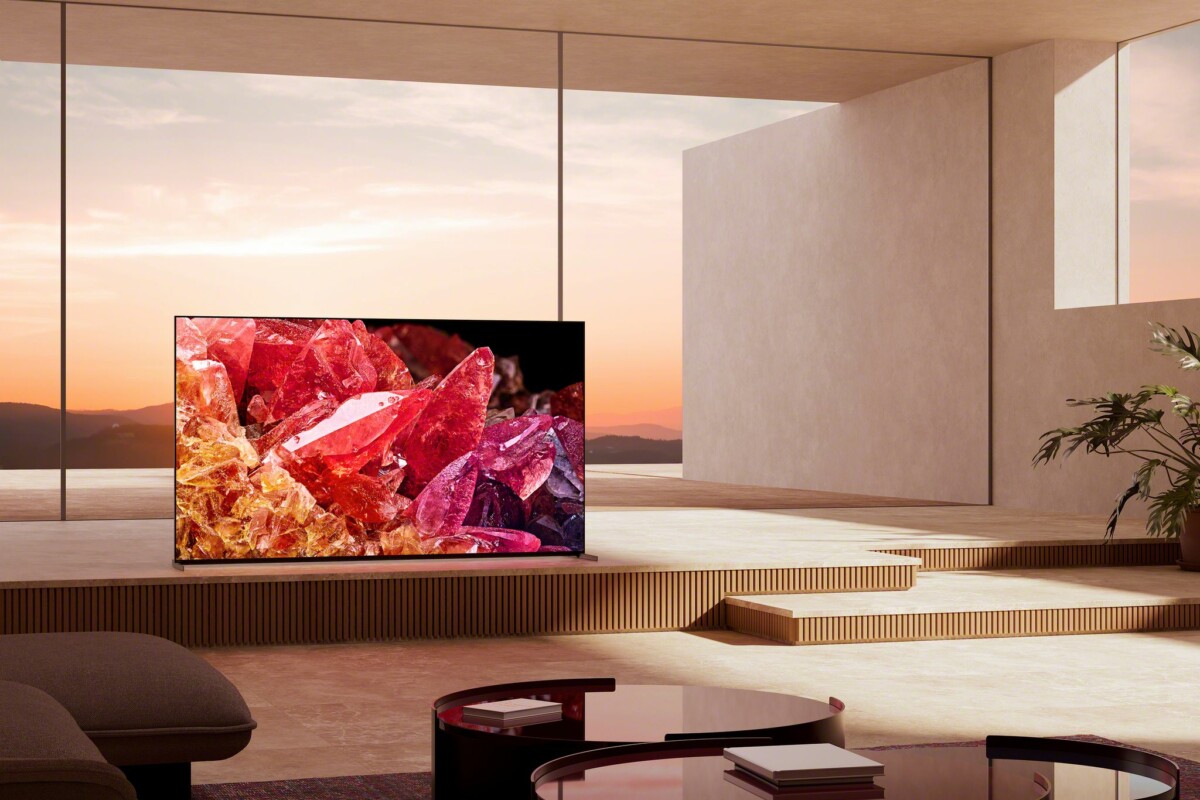
Sony X95K // Source: Sony
We are therefore still dealing here with an LCD panel, but with a sufficiently precise backlighting to obtain a very deep contrast thanks to the Mini-LED. On the other hand, unlike the Oled, we are not limited in terms of brightness. And as for the concern of the blooming generated by the backlighting, the famous halos around a luminous object in a dark scene, Sony claims to have worked hard on it thanks to algorithms “XR Backlight Master Drive” and its Cognitive XR processor.
Still mini-LED, the Chinese TCL also presented a high-end television prototype equipped with this technology. It is a Mini-LED television with an 85-inch diagonal, 8K definition and 2000 local dimming zones which stands out thanks to its record thinness of 3.9 mm. While it is relatively straightforward to produce a thin OLED display without a backlight layer, the task is much more complex for a mini-LED LCD TV which, by definition, requires a backlight layer.
All televisions shown this week at CES will be commercially available in the coming months. There is still a major unknown, namely the potential launch of the first Samsung QD-OLED televisions under the Samsung brand. For that, we will still have to wait to know if it is planned.
To follow us, we invite you to download our Android and iOS application. You will be able to read our articles, files, and watch our latest YouTube videos.
